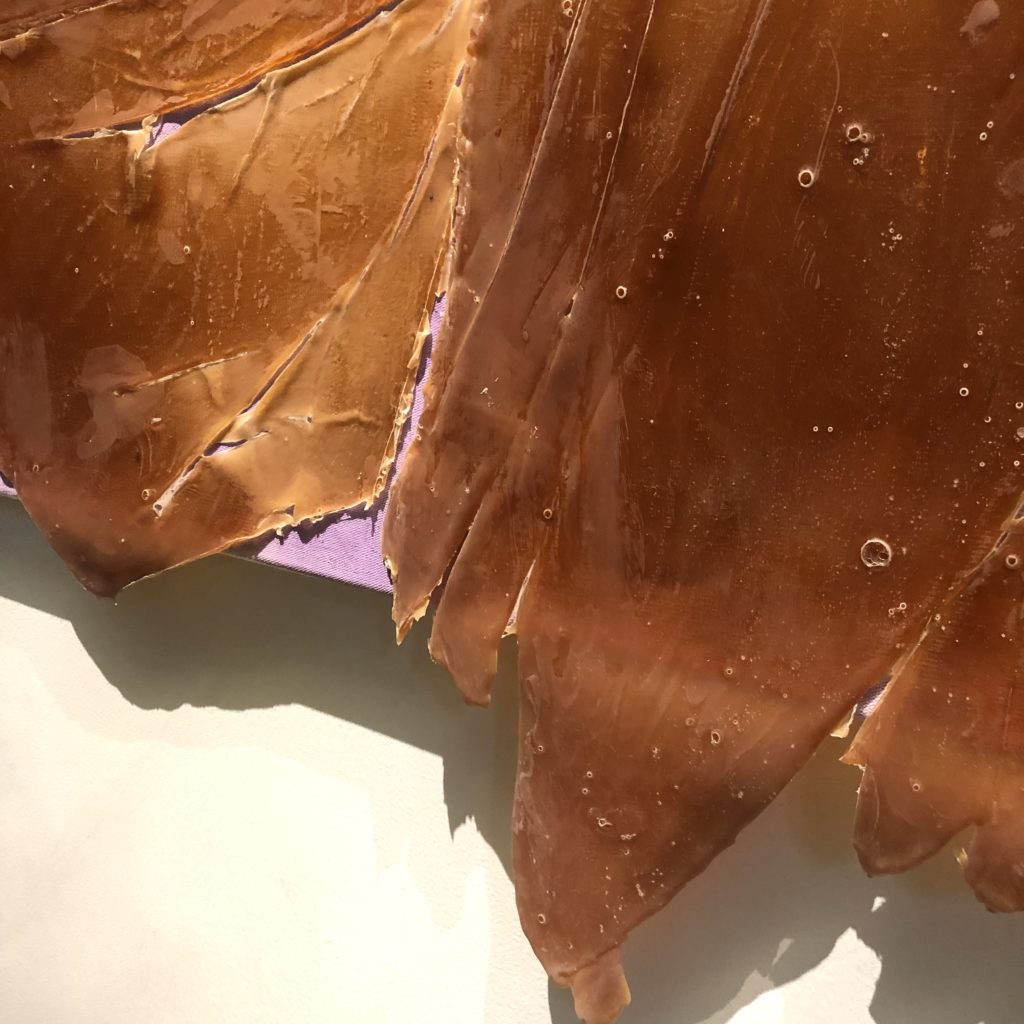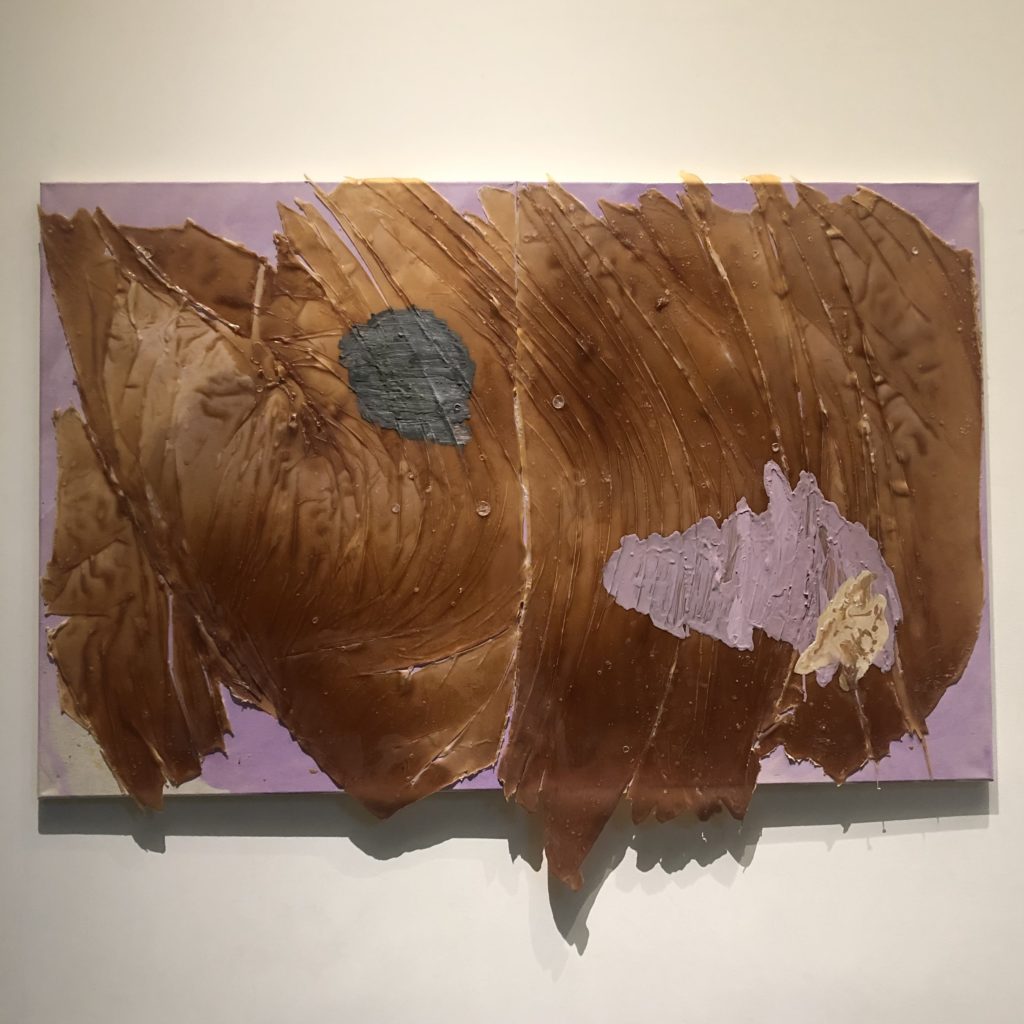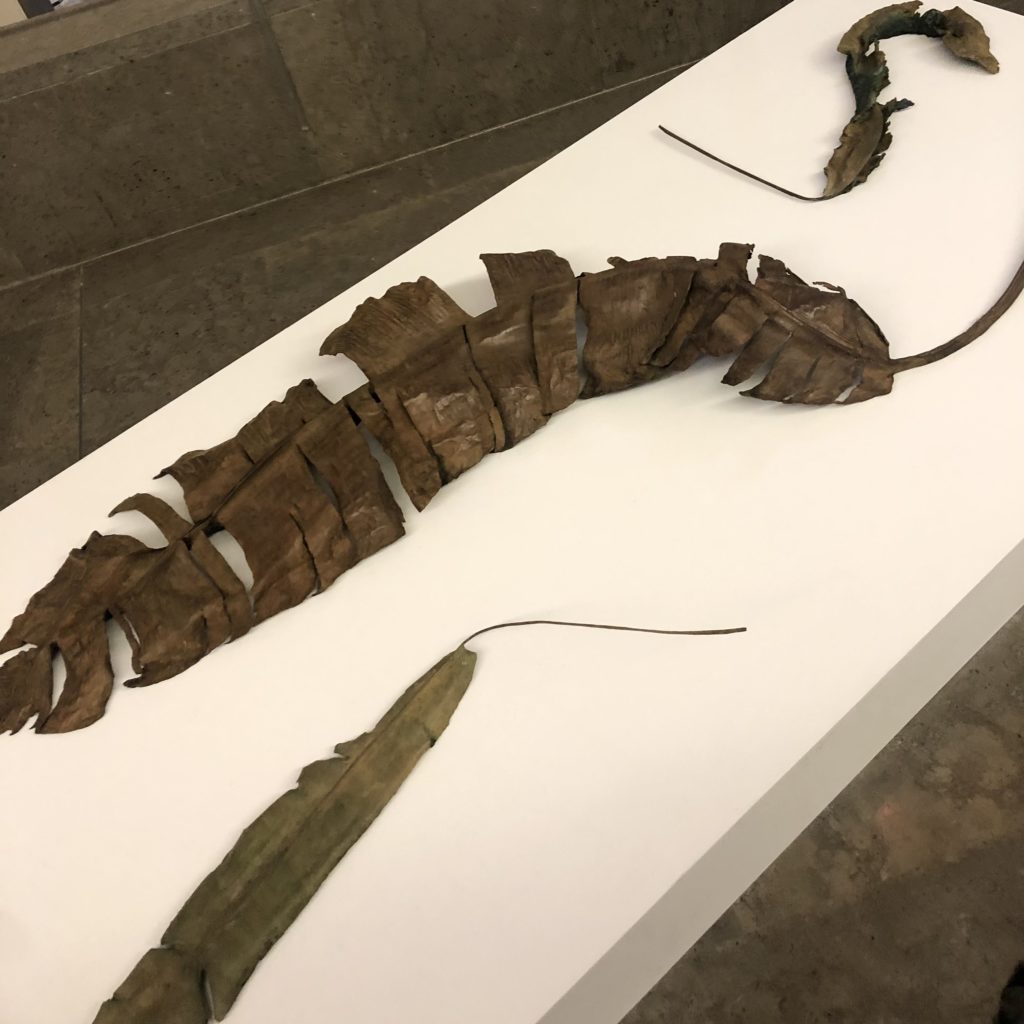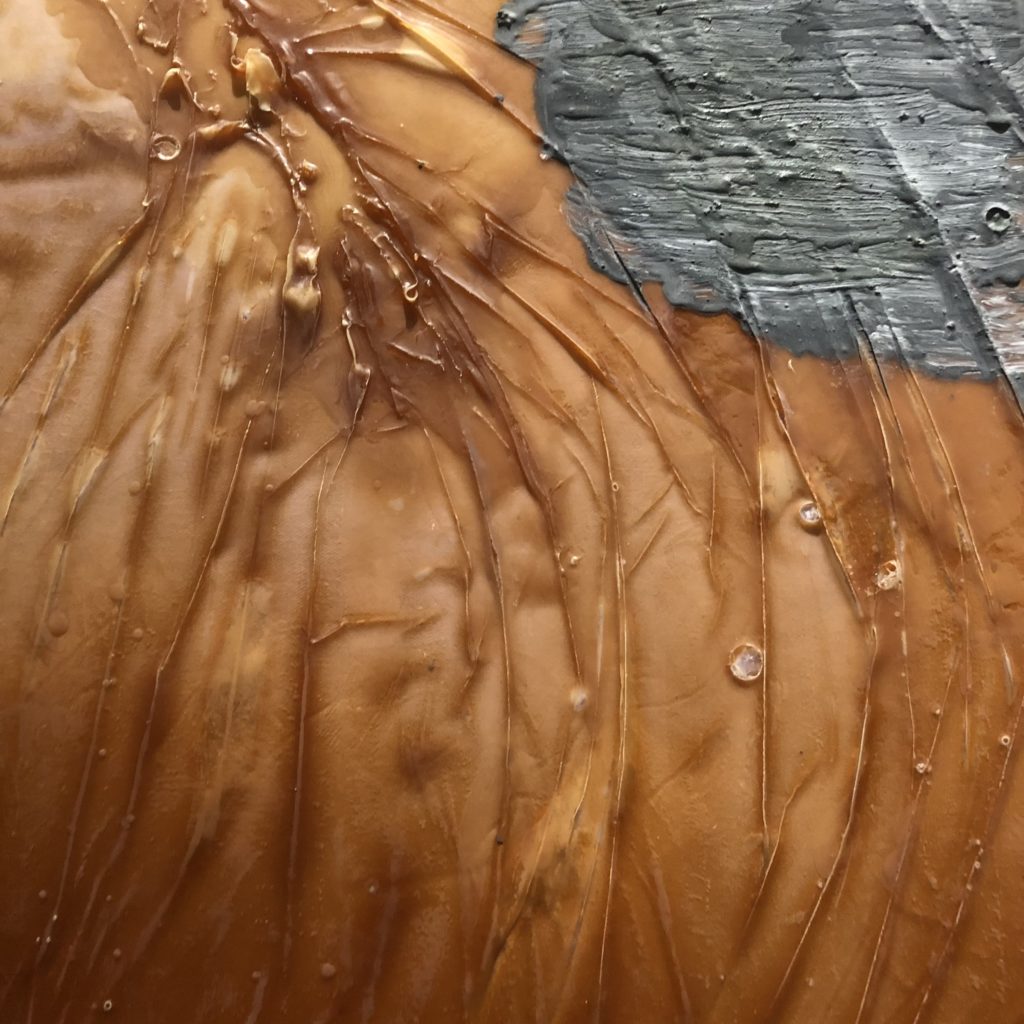by Shoko Hayashi-Moreau
Cet automne, le Musée national des arts asiatiques – Guimet a placé sa saison sous le signe du Vietnam contemporain, en mettant notamment à l’honneur le travail de Thu-Van Tran (née en 1979).

Des feuilles de bananier en bronze accueillent le visiteur au sein de la bibliothèque historique du musée et introduisent à l’exposition « Faits du même bois » de Thu-Van Tran. Ces moulages invitent à une double lecture, celle de la beauté de la végétation, et celle de l’histoire coloniale : la feuille de bananier avait été montrée au sein du pavillon d’Indochine lors de la première exposition coloniale de Paris, témoignant d’une vision exotique et naïve de ce territoire.
Le choix de l’artiste de présenter ses moulages au sol est un rappel à l’art funéraire, au gisant. Ces sculptures, moulées à partir de feuilles réelles, ont été laissées dans leur matrice le temps de la cuisson au feu, conduisant à leur minéralisation. Ce processus est non sans évoquer les rites funéraires orientaux, en particulier celui de la crémation. Cependant, le fait de pétrifier la mort est un aspect historique propre à l’occident.

En poursuivant la visite au premier étage, le visiteur rencontre des tableaux d’hévéa exposés au mur. La culture de l’arbre à caoutchouc inspire particulièrement l’artiste. C’est un matériau qui lui permet ici aussi d’évoquer l’histoire coloniale française. Quand elle utilise le caoutchouc dans son travail, Thu-Van Tran n’y ajoute pas d’intervention personnelle. Elle le laisse prendre sa place et se plier sur sa toile.
Par ses pratiques variées et son choix de matériaux, Thu-Van Tran crée un langage artistique singulier, formant une relation intime avec la matière, l’histoire de son pays d’origine et ses émotions.
ACA project remercie Les Amis de Guimet pour leur invitation à la visite guidée de l’exposition de Thu-Van Tran. Rendez-vous sur la page du Musée Guimet pour en savoir plus.

This fall, the season of the Musée national des arts asiatiques – Guimet was placed under the sign of contemporary Vietnam, by honoring the work of Thu-Van Tran (born in 1979) among others.
Bronze banana leaves welcome visitors to the museum’s historical library and introduce to Thu-Van Tran’s “Made from the Same Wood” exhibition. These casts have a dual reading, that of the beauty of the vegetation, and that of colonial history: the banana leaf was shown in the Indochina pavilion during the first colonial exhibition in Paris, testifying to an exotic and naive vision of this territory.
The artist’s choice to present her casts on the ground is a reminder of the funeral art, the recumbent statue. These sculptures, molded from real leaves, were left in their matrix during the firing time, leading to their mineralization. This process is reminiscent of oriental funeral rites, in particular cremation. However, the fact of petrifying death is a historical aspect unique to the West.

Continuing the visit to the first floor, the visitor comes across paintings of rubber trees displayed on the wall. The culture of the rubber tree particularly inspires the artist. Here also, it is a material that allows her to evoke French colonial history. When she uses rubber in her work, Thu-Van Tran does not add any personal intervention. She lets it take its place and fold over her canvas.
Through her varied practices and her choice of materials, Thu-Van Tran creates a unique artistic language, forming an intimate relationship with the material, the history of her home-country and her emotions.
ACA Project would like to thank the Friends of Guimet for the visit of Thu-Van Tran’s exhibition. Check out the webpage of the Musée Guimet to learn more.

